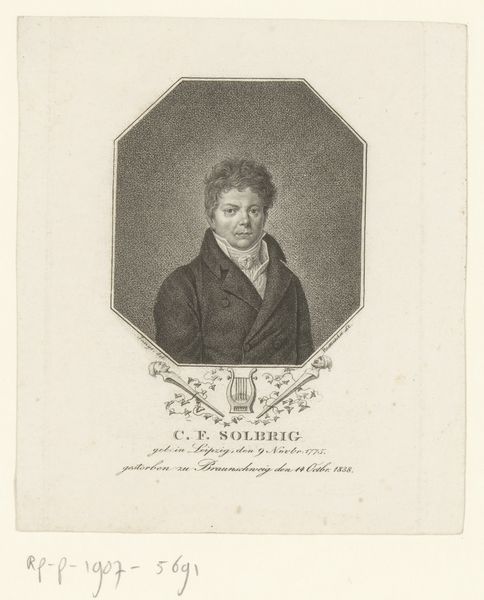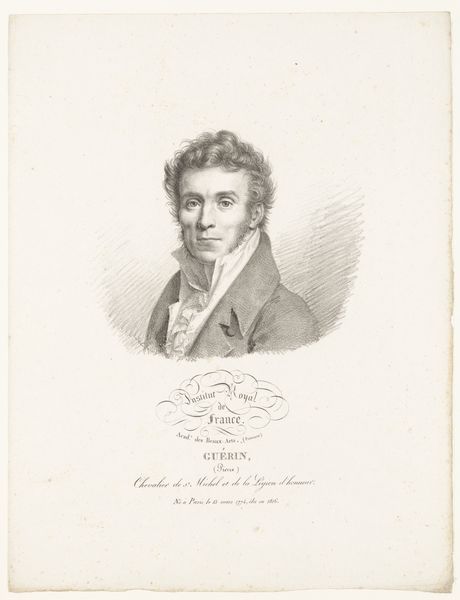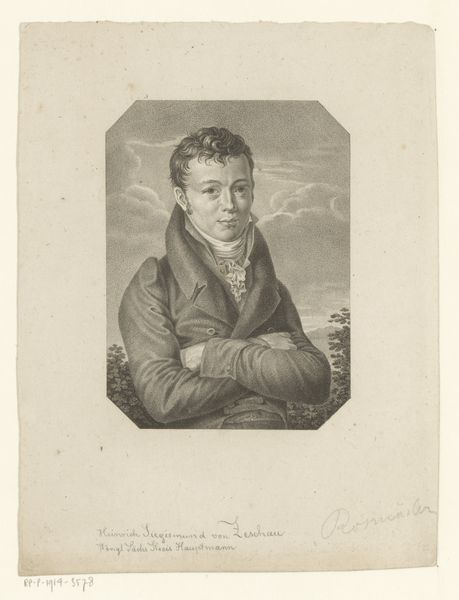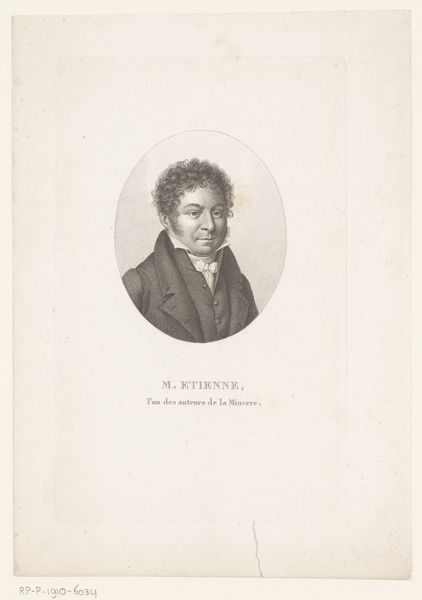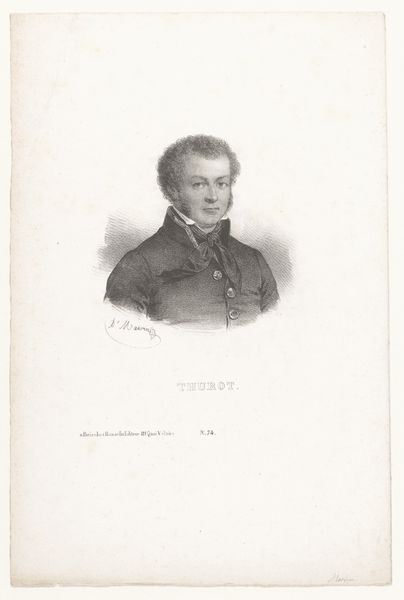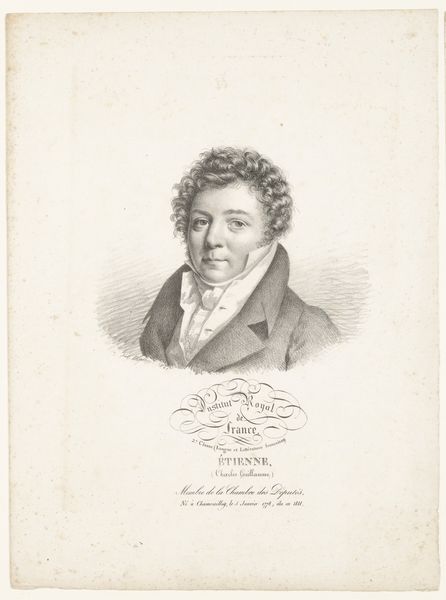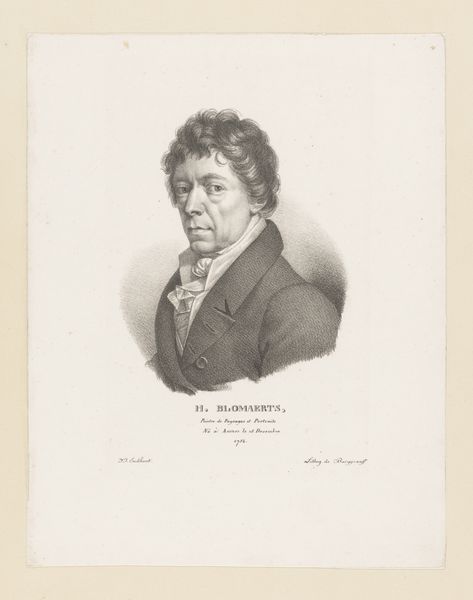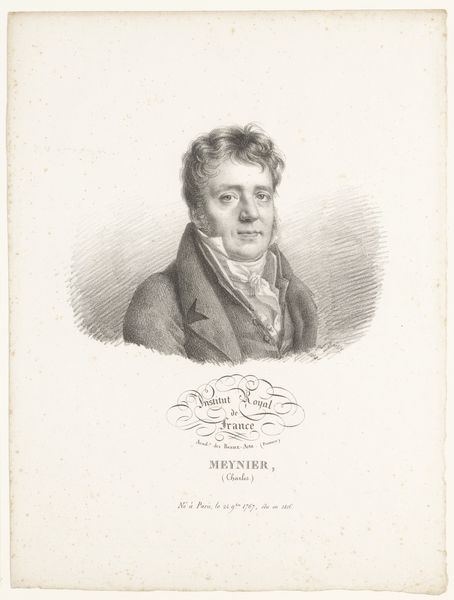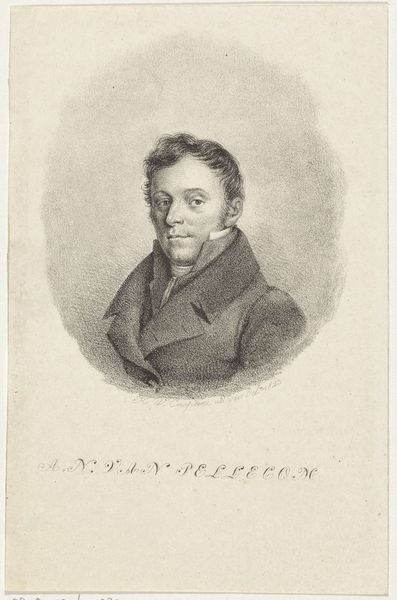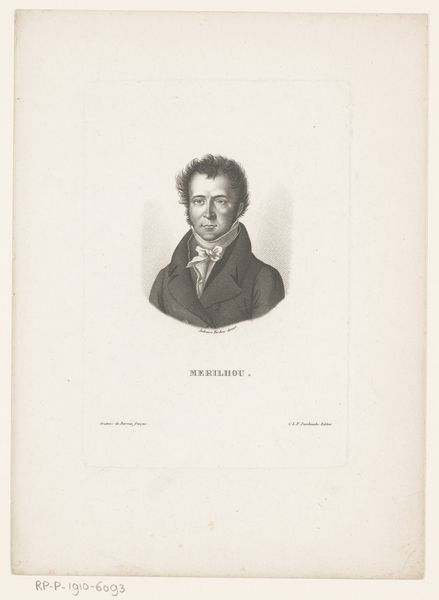
print, engraving
#
portrait
#
neoclacissism
# print
#
old engraving style
#
history-painting
#
engraving
#
realism
Dimensions: height 123 mm, width 95 mm
Copyright: Rijks Museum: Open Domain
Editor: This is a print from between 1800 and 1858, housed in the Rijksmuseum, titled "Portrait of Carl Friedrich Solbrig", made by Friedrich Rossmässler. It seems to be an engraving… almost photographic in its detail despite its age. What strikes you about this work? Curator: I'm drawn to the process of its creation. Engraving is laborious, requiring immense skill. The matrix, probably a copper plate, would have been painstakingly worked with burins and other tools. Each line represents hours of craft labor. Consider the cultural context. This portrait wouldn’t have been mass produced like today's images; it's an object intended for a select audience. What social function did these types of engravings serve? Editor: Perhaps a way to circulate images of important figures, like a proto-photograph for the elite? Were engravings considered "art" in the same way painting or sculpture were? Curator: That’s an interesting question. Boundaries were fluid. This image probably operated both as a document and an artistic commodity. Someone meticulously reproduced likeness to preserve or disseminate information; there’s labor and therefore embedded value within. Do the inscriptions beneath Solbrig’s image alter our reading? How is the value modified with their addition? Editor: They definitely add to it; turning it into more than just an image of someone, but information. They highlight Solbrig’s origins and premiere, imbuing the image with not only materiality, but a record of a personal history and the production history. The tools framing it indicate Solbrig’s affiliation with the arts. This focus on craft has shown me a new side of the portrait! Curator: Exactly! It forces us to examine its status as an object of both art and labor, not one or the other, showing these mediums often co-existed.
Comments
No comments
Be the first to comment and join the conversation on the ultimate creative platform.
